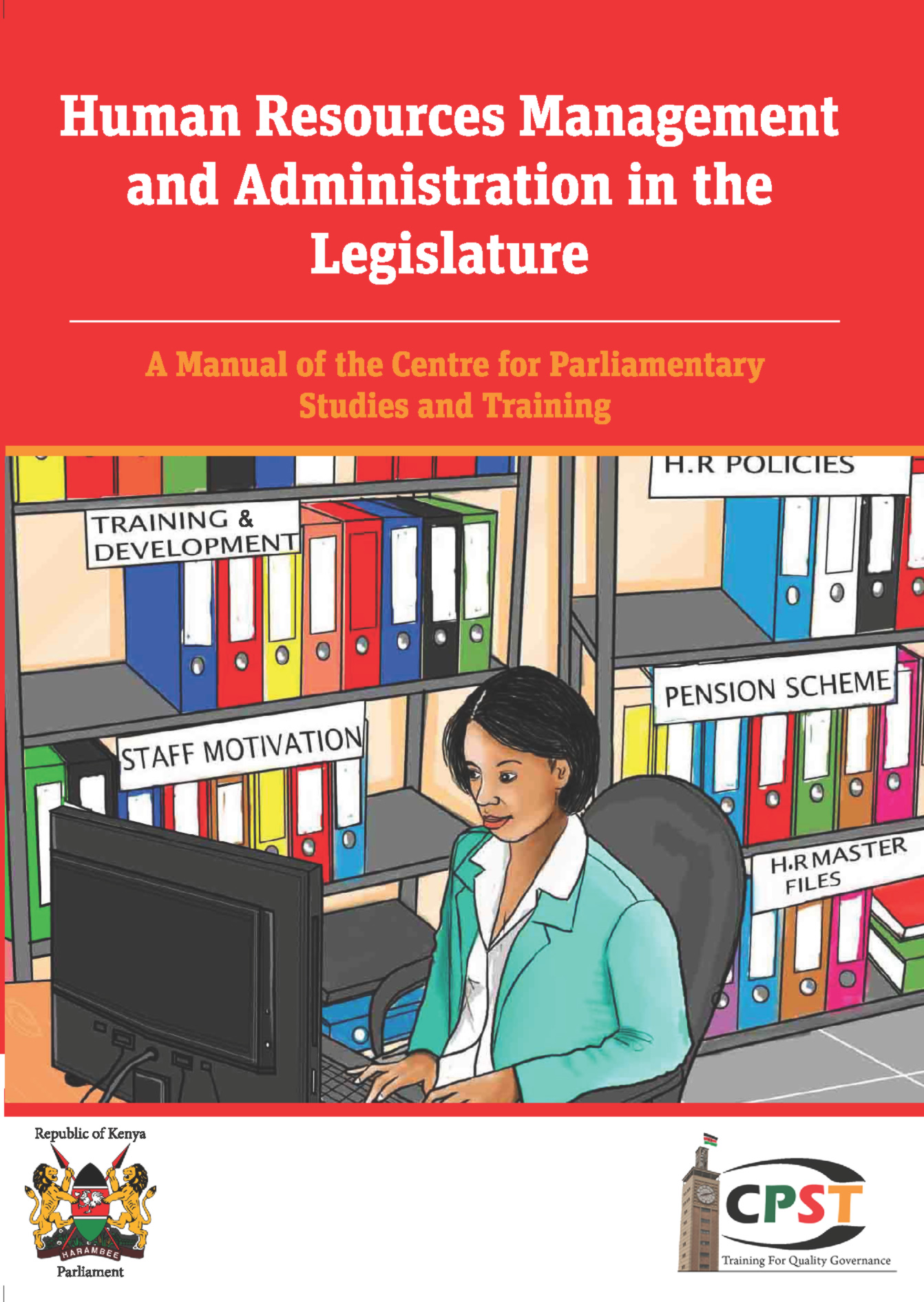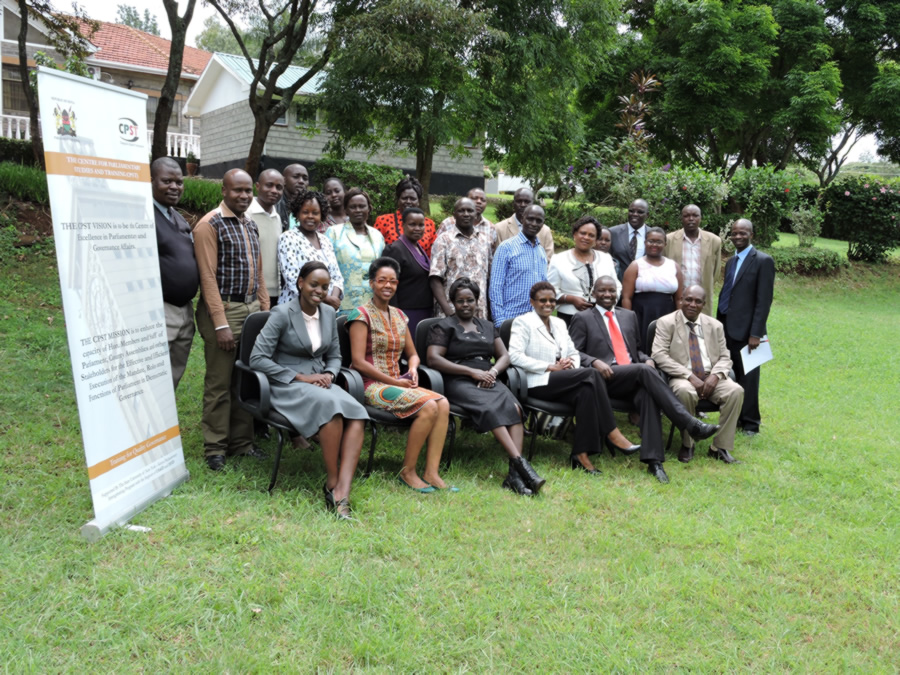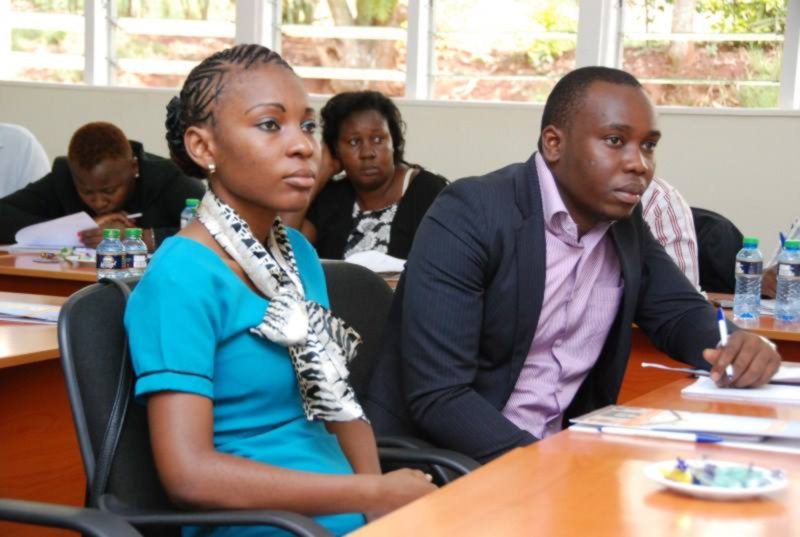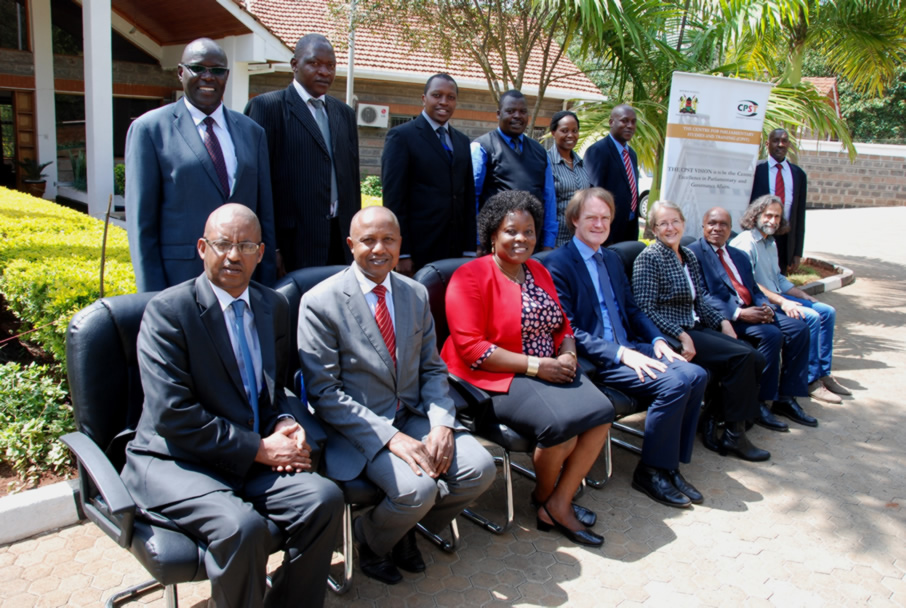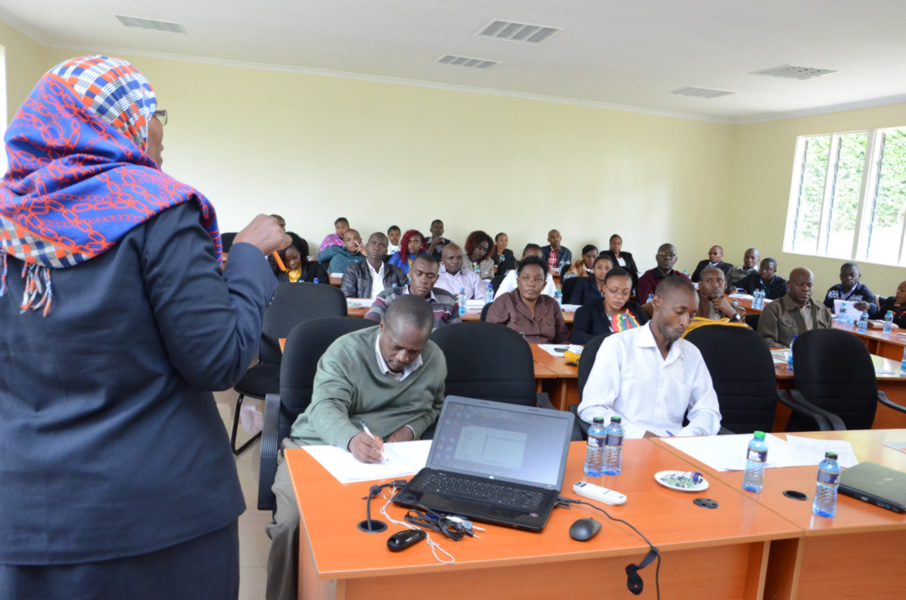Manual Highlights
Acknowledgements
This manual on Human Resources Management and Administration in the Legislature has been prepared with the support and generous contribution of many individuals and organisations. We immensely appreciate the generous financial support of the Ford Foundation; State University of New York (SUNY) Kenya; Westminster Foundation for Democracy (WFD) and UN Women. The involvement of these organisations is a clear demonstration of their strong commitment to capacity building for the legislatures in Kenya and the region. My sincere appreciation goes to the Resident Representatives of these organisations namely Mr Maurice MakOloo, Mr Francis Aywa, Ms Hope Muli and Mrs Zabib Kavuma respectively.
About this Manual
Managing human resources effectively has become vital to organisations of the 21st century. The heightened levels of global competitiveness have alerted all firms to the fact that all their resources must be utilised well. Human resource management has received much attention recently because of the increasing realisation that human resources are the most valued assets of an organisation because they are a source of competitive advantage. Individuals dealing with human resource matters face a multitude of challenges, ranging from a constantly changing workforce to ever-present government regulations and major technological revolutions. Furthermore, global competition has caused both large and small organisations to be more conscious of costs and productivity. Because of the critical nature of human resource issues, these matters are receiving major attention from senior management.
CPST 109:
-
Administration and Human Resources Management in the Legislature:
DetailsCourse Duration: 36 HoursEssentially, the purpose of Human resource management is to maximise the productivity of an organisation by optimising the effectiveness of its employees. This mandate is unlikely to change in any fundamental way, despite the ever-increasing pace of change in the business world. The basic mission of human resources will always be to acquire, develop, and retain talent; align the workforce with the business strategy; and be an excellent contributor to the business. Major human resources functions include human resources planning, job analysis and job design, recruitment and selection, orientation, training and development, performance management, compensation management, labour and industrial relations and employee health and safety. For all these functions the human resources specialists should develop strategies, policies, procedures and practices that will facilitate their implementation and maintain the firm’s sustainable competitive advantage.
All organisations have human resources who need to be effectively managed if the organisation is to survive in this competitive environment. Effective human resources management ensures that the organisation can attract, retain high performing and motivated staff. It ensures that human resources remain relevant in the face of the ever changing internal and external environment. All aspects of human resource management including how companies interact with the environment; acquire, develop, and compensate employees; and design and evaluate work can help companies meet their competitive challenges and create value. Human resource management activities play a major role in ensuring that an organisation survives and prospers.
CPST 121:
-
Registry Management :
DetailsDuration: 24 HoursOrganisations generate a lot of data from the daily activities that are carried out. The information generated is then kept in records for effective decision-making. Proper management of records and information can help an organisation to be more responsive, efficient and flexible in the face of continuous and rapid changes. Leveraging on technology can enable organisations to produce quality information in terms of timeliness, comprehensiveness and accuracy, thereby minimising erratic decision making. This course is designed for officers working in the Parliamentary registry. It aims to impart knowledge, skills and attitudes that will enable them to effectively manage records and hence enhance productivity in the PSC. A poorly managed registry hinders any organisation from achieving its core mandate, creates loss of vital documents, creates unnecessary delays in locating documents, and portrays a general picture of chaos and disorder. This course is vital in redressing all these anomalies.
Records management is the professional practice or discipline of controlling and governing what are considered to be the most important records of an organisation throughout the records life-cycle, which includes from the time such records are conceived through to their eventual disposal. This work includes identifying, classifying, prioritising, storing, securing, archiving, preserving, retrieving, tracking and destroying of records. It is the systematic control of an organisation’s records, throughout their life cycle, in order to meet operational business needs, statutory and fiscal requirements, and community expectations. Records management offers tangible benefits to organisations, from economic good practice in reducing storage costs of documents, to enabling legislative requirements to be met. An unmanaged record system makes the performance of duties more difficult, costs organisations time, money and resources, and makes them vulnerable to security breaches, prosecution and embarrassment. Effective management of corporate information allows fast, accurate and reliable access to records, ensuring the timely destruction of redundant information and the identification and protection of vital and historically important records.
CPST 122:
-
Human Resource Information Systems:
DetailsDuration: 15 HoursThe human resource (HR) function of organisations is changing rapidly, reacting to the changes occurring in its operating environment and the rapidly evolving information technologies. Clearly, developments in the information technology field have affected the traditional HR functions and have created significant challenges for HR professionals in adapting technological innovations. To meet these challenges, many organisations have turned to information systems technology. These information technologies have led to a widespread implementation of human resource information systems (HRIS) that allow organisational staff to participate in information sharing and decisionmaking. The primary reason for the increased use of human resources information systems (HRIS) is that organisations believe that automating labor intensive HR functions will help them streamline processes, utilise employees’ talents and skills more effectively, and achieve their strategic objectives. Similarly, organisations contend that the use of HRIS can help attract, retain, and improve the productivity of non-managerial and managerial workers. HRIS systems have reduced administrative costs, and improved the accuracy and timeliness of many HR transactions. HRIS solutions are capable of transforming the traditional HR functions into a comprehensive human capital Course, delivering strategic, financial and competitive benefits. HRIS has recently become vital partners in developing and implementing organisation HR strategies. HRIS provides enormous potential for enhancing productivity of human resources in both public and private sectors. These benefits from HRIS to productivity can be categorised as tangible and Intangible (Barzegar, Araghieh & Asgarani, 2012).
Computer-based information technologies have resulted in widespread usage of HRIS applications that are helping to improve the efficiency and the effectiveness of HR function, and are enabling a greater focus on making a strategic contribution. A human resource information system (HRIS) is a system used to acquire, store, manipulate, analyse, retrieve and distribute pertinent information about an organisation’s human resource. Initially, such a system was used in human resource management to support transaction processing and maintain management control. A good human resource decision is more likely to follow from a good HRIS. Such a system should therefore be provided to both human resource and line managers to facilitate decision making. A HRIS is made up of various elements and if one element does not function properly, it could well cause the function of the entire system to fail. When all elements work correctly and the system works properly it should benefit the organisation. Similarly the HRIS is usually a part of the organisation’s larger management information system, which would include accounting, production and marketing functions, to name just a few.
CPST 115:
-
Strategic Leadership, Planning and anagement:
DetailsDuration:10 HoursManaging change and ambiguity requires strategic leaders who not only provide a sense of direction, but who can also build ownership and alignment within their workgroups to implement change. Strategic planning is an organisational management activity that is used to set priorities, focus energy and resources, strengthen operations, ensure that employees and other stakeholders are working toward common goals, establish agreement around intended outcomes/results, and assess and adjust the organisation’s direction in response to a changing environment. It is a disciplined effort that produces fundamental decisions and actions that shape and guide what an organisation is, who it serves, what it does, and why it does it, with a focus on the future. Effective strategic planning articulates not only where an organisation is going and the actions needed to make progress, but also how it will know if it is successful.
Without effective strategic leadership, the probability that an organisation can achieve superior or even satisfactory performance when confronting the challenges of the global economy will be greatly reduced. During the last 20 years, the field of strategic leadership has undergone both a rejuvenation and a metamorphosis in order to keep at pace with the changing needs of the global business and public administration arena. The essence of strategic leadership involves the capacity to learn, the capacity to change, and the capacity to apply managerial wisdom. Strategic leadership provides the vision and direction for the growth and success of an organisation. To successfully deal with change, all executives need the skills and tools for both strategy formulation and implementation.
-
CPST stands for?
Centre for Parliamentary Studies and Training


